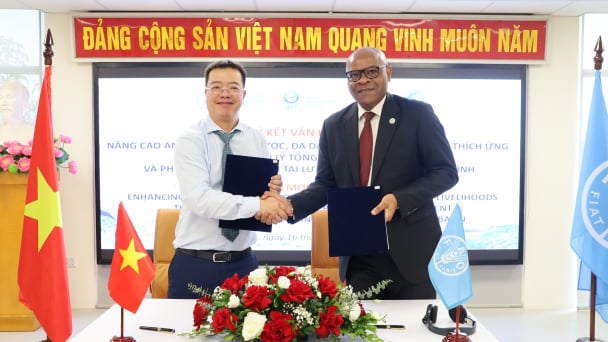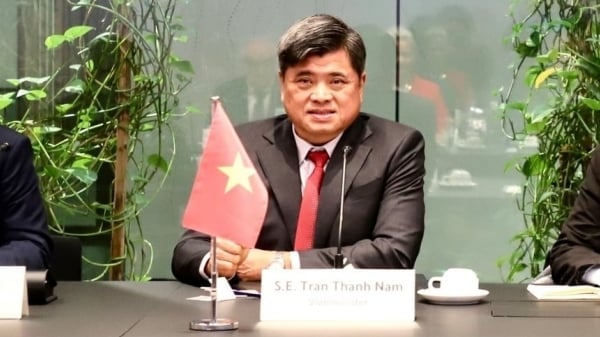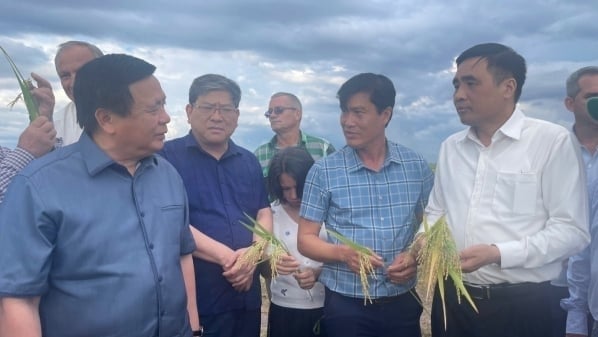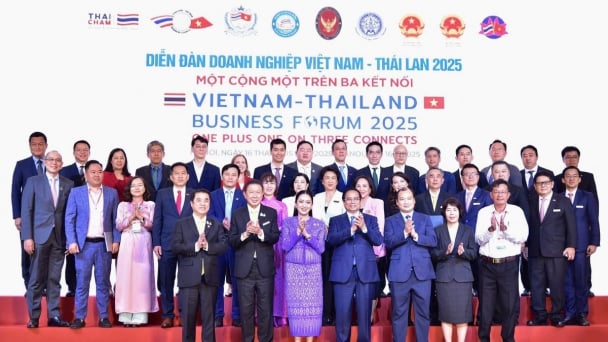May 19, 2025 | 13:15 GMT +7
May 19, 2025 | 13:15 GMT +7
Hotline: 0913.378.918
May 19, 2025 | 13:15 GMT +7
Hotline: 0913.378.918
At the meeting with Minister of Agriculture and Environment Do Duc Duy on the afternoon of April 7, Mr. Ngo Sy Hoai, Vice Chairman and Secretary General of the Vietnam Timber and Forest Products Association, raised the question of why Vietnamese wood products are being exported to the U.S. in such large volumes.
According to Mr. Hoai, out of the country’s total agro-forestry export turnover of around USD 13-14 billion, the wood and forest products sector alone accounts for approximately USD 9.4 billion. At the national level, this is considered a sector with a significant trade surplus.
On the other hand, Vietnam only imports about USD 323 million worth of wood from the US each year, of which up to USD 300 million consists of raw wood materials (such as oak and ash). These materials are used for processing into refined products and then re-exported back to the U.S. Notably, the U.S. is constantly seeking markets for its timber products, and Vietnam is currently the second-largest importer of American wood globally.

Mr. Ngo Sy Hoai, Vice Chairman and Secretary General of the Vietnam Timber and Forest Products Association, spoke at the meeting on the afternoon of April 7. Photo: Khuong Trung.
Mr. Hoai further noted that each year, the U.S. imports about USD 23 - 24 billion worth of wooden furniture, of which Vietnam supplies approximately 38 - 40% of the import value. These are mainly high-quality finished wood products manufactured in Vietnam, where low labor costs provide a competitive advantage.
Explaining the rapid increase in wood exports to the U.S., Mr. Hoai said that since the onset of the U.S. -China trade dispute in 2018, Chinese wood products have been subjected to tariffs ranging from 25% to over 200%. In contrast, Vietnamese wood products have not faced any tariff changes. As a result, this has created a “golden opportunity” for Vietnamese businesses to import raw materials from the US and export high-value processed wood products back to the American market. This trend aligns with the supply chain diversification strategies promoted under both President Trump and President Biden.
Vietnam has now become the second-largest supplier of furniture to the U.S., a breakthrough achievement. This growth, however, has also placed the Vietnamese wood industry under closer scrutiny. Despite multiple investigations from the US, the industry has consistently maintained cooperative technical agreements and demonstrated compliance with legal timber harvesting standards.
Regarding the newly proposed and “shocking” 46% tariff rate, both foreign-invested and domestic enterprises are doing their best to adapt, without currently considering withdrawal from the market, as relocating production to another country is not a simple task.
As for solutions, Mr. Hoan shared that, for the time being, enterprises are remaining calm and placing their trust in the government's negotiation efforts. A particularly positive signal is Vietnam’s decision to waive all import fees on timber shipments from the U.S., which is a clear gesture of goodwill from the country’s top leadership.
In the long term, the association hopes for financial and fiscal support measures similar to those applied during the COVID-19 pandemic, such as debt rescheduling, tax deferrals, and reductions in land lease fees, to help businesses weather the current challenging period.
Looking ahead, Mr. Hoan revealed that China has recently banned imports of US roundwood and sawn timber, an annual trade estimated at around USD 2 billion. Consequently, the US is actively seeking new export markets for these products. The Vietnam Timber and Forest Product Association has proposed that the government consider reviewing current policies to seize this opportunity to expand exports to China - the world’s largest consumer of sawn timber, with an annual market value of up to USD 2 billion. This strategy could help create new demand for US roundwood and sawn timber, thereby contributing to a more balanced bilateral trade relationship.
“In every challenge lies an opportunity,” Mr. Hoai emphasized. He believes the current difficulties could serve as a catalyst to restructure the industry, with a focus on high-value-added product segments such as furniture, an area where Vietnam holds significant competitive advantages.
Ministry of Agriculture and Environment affirmed that the government will always stand by and seek long-term, sustainable solutions for Vietnam's agricultural sector. In this effort, the state, businesses, associations, and farmers must work closely together, hand in hand to restructure, upgrade the value chain, and move towards a modern, more resilient agricultural sector.
Translated by Kieu Chi

(VAN) The German Agricultural Society (DLG) explores the possibility of establishing a mechanization service center in Vietnam’s Mekong Delta to support farmers in accessing and utilizing advanced machinery.

(VAN) On May 16, the Department of Water Resources Management, in collaboration with the Food and Agriculture Organization of the United Nations (FAO), held a signing ceremony for the GEF-8 project document.

(VAN) Food safety, mechanization, vocational training, and market opening are key areas of cooperation expected between the Vietnamese Government and the Federal Republic of Germany.

(VAN) Deputy Minister Nguyen Quoc Tri also expressed his hope that Cuba will soon overcome its current challenges, attain food security, and further expand cooperation with Vietnam.

(VAN) The project contributes to enhancing the resilience of communities vulnerable to the impacts of climate change, with a primary focus on local women.

(VAN) Green materials help save energy and resources. However, after more than 10 years, Vietnam has only developed over 200 green buildings with more than 6 million square meters of floor space.

(VAN) Vietnam - Thailand Business Forum 2025: One plus one on three connects, marking a milestone in the comprehensive strategic partnership between the two nations.